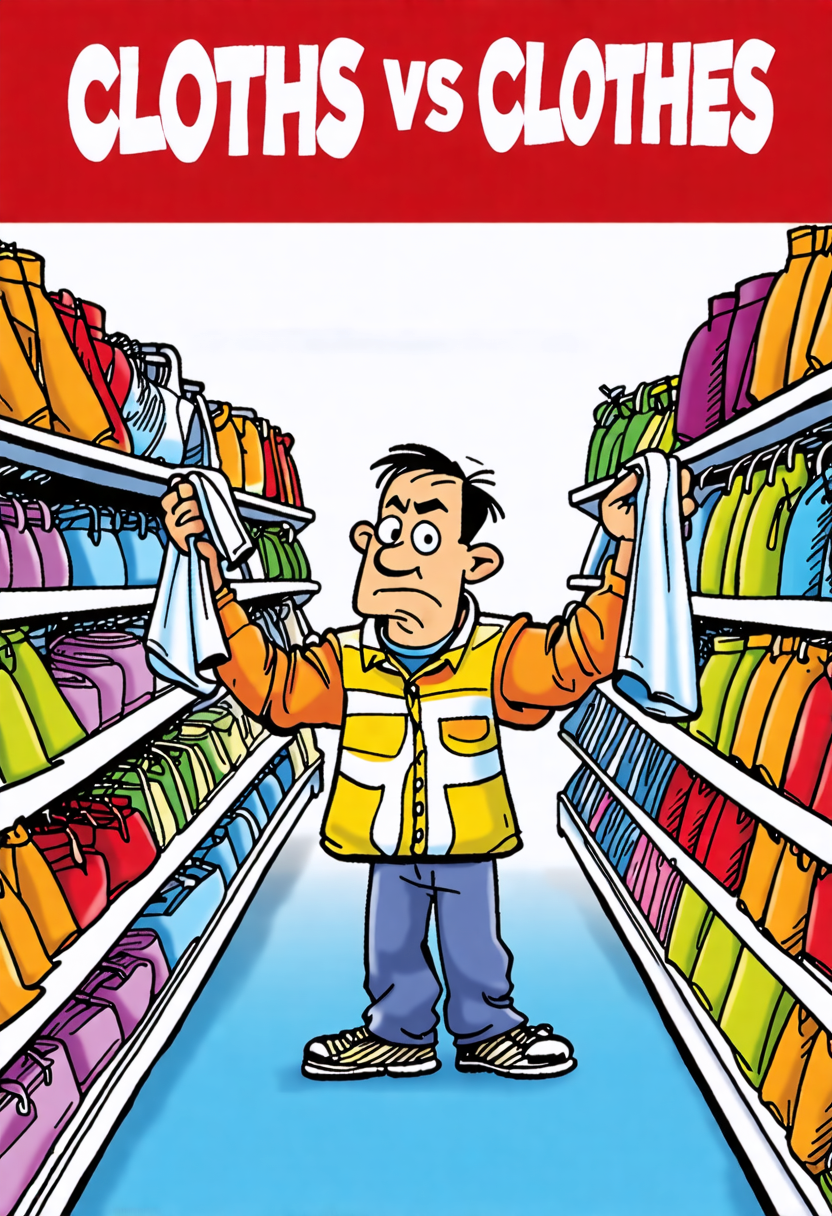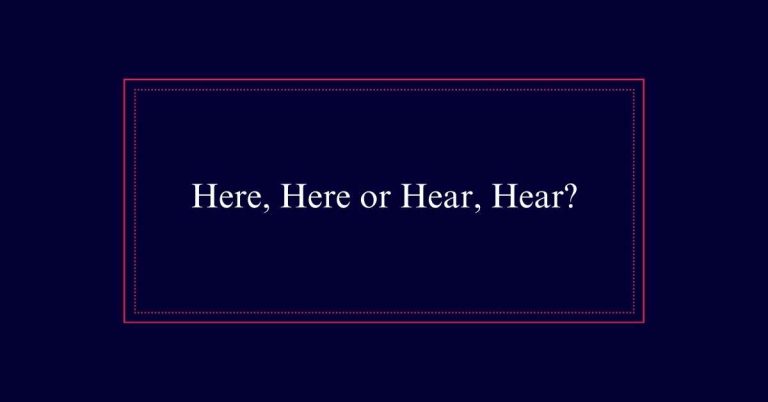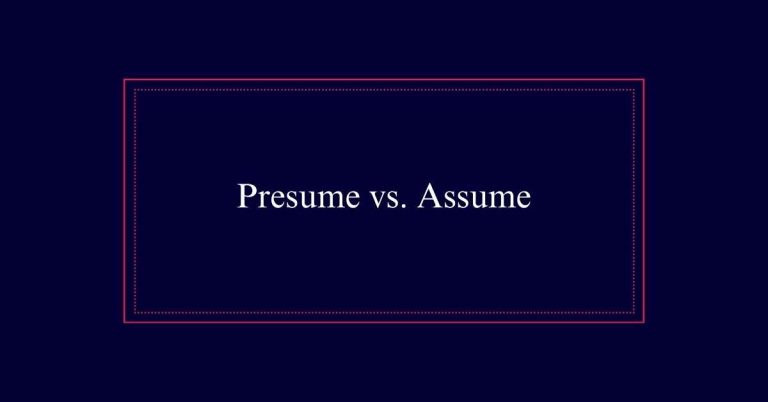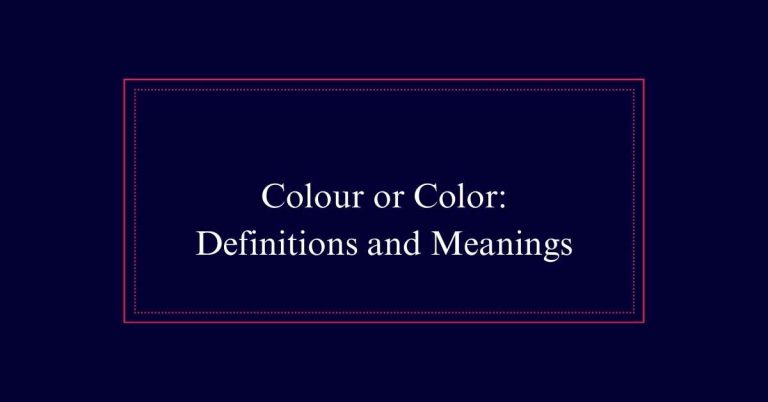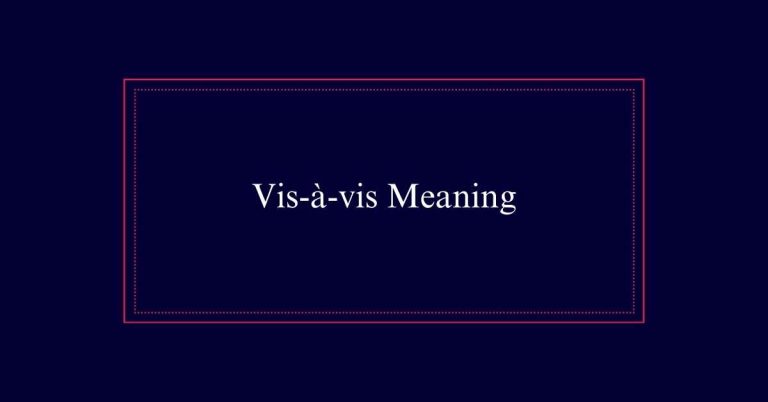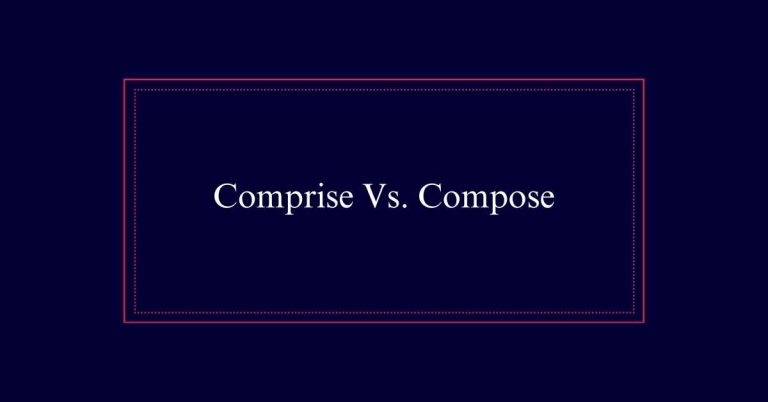Cloths Vs. Clothes
Cloths and clothes serve different purposes and have distinct meanings. Cloths are pieces of fabric used for cleaning, polishing, or covering objects, made from materials like cotton or microfiber. For example, you might use a cloth to wipe a table. Clothes are garments worn for protection and self-expression, including items like shirts, dresses, and jackets. They protect from weather and convey personal style. The pronunciation differs slightly: ‘cloths’ (klawths) and ‘clothes’ (klohthz).
Definition of Cloths
Cloths are pieces of fabric commonly used for cleaning or other practical purposes. These can be made from various materials, including cotton, microfiber, or old clothing.
For example, Nina cleaned her furniture with cloths made from an old T-shirt. Cloths are versatile and can be used to wipe surfaces, polish items, or even cover objects. They are pronounced ‘klawths’ or ‘kloths.’
Definition of Clothes
Clothes, referring to garments worn by individuals, are essential for both protection and self-expression. They include items like shirts, pants, dresses, and jackets.
Clothes protect us from the elements, such as cold, heat, and rain. They also serve as a means to convey personal style and cultural identity. For example, a business suit can indicate professionalism, while a colorful dress might express creativity.
Pronunciation Differences
The distinction in pronunciation between ‘cloths’ and ‘clothes’ is subtle but significant.
‘Cloths’ is pronounced as ‘klawths’ or ‘kloths,’ with a soft ‘th’ sound.
In contrast, ‘clothes’ is pronounced with a long ‘o,’ sounding like ‘klohthz,’ where the ‘th’ sounds more like a ‘z.’
This subtle difference can alter the meaning of a sentence.
For example, saying “Nina cleaned the table with cloths” clearly refers to pieces of fabric.
Meanwhile, saying “Nina bought new clothes” refers to garments one wears.
Understanding and correctly pronouncing these words promotes clear communication.
Mispronunciation could lead to confusion, especially in professional or formal settings.
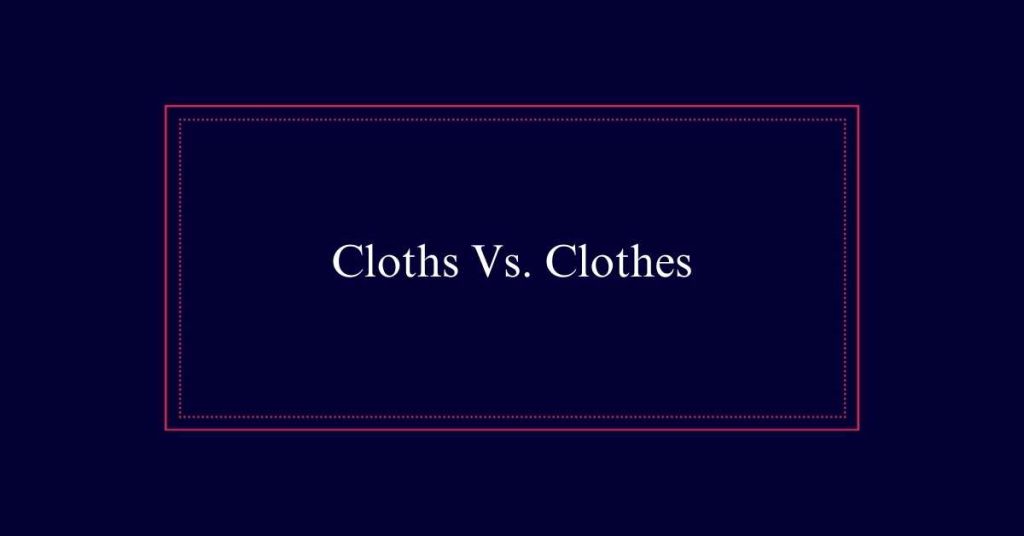
Examples of Cloths
Understanding the pronunciation helps distinguish between cloths and clothes, but examples can further clarify their use. Cloths commonly refer to pieces of fabric used for various purposes. For instance, Nina cleaned furniture with cloths made from an old T-shirt. These cloths can be repurposed for dusting or polishing surfaces.
In another example, Cathy likes to dress her twin daughters in matching cloths, indicating that they use similar fabric pieces for specific activities or crafts. Additionally, household members in the past often used cold cloths to revive someone by placing them on the forehead.
These examples highlight how cloths serve practical and diverse roles in everyday life, from cleaning to health-related uses.
Examples of Clothes
From everyday wear to formal attire, garments come in various forms and serve multiple purposes. T-shirts and jeans are common for casual settings, offering comfort and ease of movement.
Dresses and suits are typically worn for formal events, providing a polished appearance. Sweaters and jackets are essential for colder weather, adding warmth and protection.
Activewear like gym shorts and yoga pants is designed for exercise, guaranteeing flexibility and durability. Pajamas and nightgowns are specifically for sleep, ensuring comfort throughout the night.
Accessories such as hats, scarves, and gloves complement outfits and provide additional functionality. Each type of clothing serves a unique role, catering to different activities and occasions.
Proper care guarantees their longevity and continued use.
Common Uses for Cloths
Cloths serve a multitude of purposes, from cleaning surfaces to wrapping delicate items. They are essential in household chores, such as dusting furniture, wiping kitchen counters, and polishing glass.
Microfiber cloths, for example, are excellent for cleaning because they trap dust and grime effectively. Cloths are also used in automotive care, where they help in washing and drying vehicles without scratching the paint.
In the culinary world, cloths are indispensable for drying dishes, handling hot pots, and covering dough while it rises. Additionally, cloths can protect fragile items during transport by providing a soft barrier.
Common Uses for Clothes
Clothes serve numerous purposes, primarily providing warmth and protection. They are essential in everyday life, offering functionality and style. Clothes shield us from environmental elements, such as cold, heat, and rain. They also play a critical role in social settings, helping to communicate identity and status.
Common uses for clothes include:
- Protection: Heavy coats in winter or raincoats during a storm.
- Modesty: Covering the body in line with cultural norms.
- Fashion: Expressing personal style with trendy outfits.
- Uniformity: Identifying roles, like uniforms for nurses or police officers.
- Comfort: Relaxing in soft pajamas or casual wear at home.
Benefits of Cloths
A key benefit of cloths is their versatility for various cleaning tasks. Cloths can be used for dusting, wiping surfaces, and polishing items. They are suitable for both household chores and professional cleaning jobs. For instance, microfiber cloths are excellent for capturing dust without spreading it around. Additionally, reusable cloths are eco-friendly, reducing the need for disposable wipes.
| Task | Type of Cloth |
|---|---|
| Dusting | Microfiber cloth |
| Polishing | Soft cotton cloth |
| Wiping spills | Absorbent cloth |
Such cloths are also cost-effective since they can be washed and reused multiple times. By selecting the right type of cloth for each task, one can ensure efficient and effective cleaning.
Benefits of Clothes
Wearing clothes provides essential protection from environmental elements. They shield us from extreme temperatures, harmful UV rays, and insect bites. Clothes also play a significant role in social and cultural settings. They allow us to express our identity and adhere to social norms. Additionally, clothes can enhance our confidence and comfort.
Consider the following benefits of clothes:
- Protection: Safeguard against weather and environmental hazards.
- Comfort: Provide warmth in cold climates and coolness in hot weather.
- Identity: Allow personal expression and cultural representation.
- Confidence: Boost self-esteem and create a positive self-image.
- Hygiene: Help maintain cleanliness and hygiene by covering the body.
These advantages highlight the vital role of clothes in daily life.
Frequently Asked Questions
How Do Cloths Differ From Clothes in Daily Usage?
Cloths, pieces of fabric, are used for cleaning and other tasks. Clothes, garments worn by people, serve for protection and self-expression. An example: use cloths to dust furniture; wear clothes for daily activities.
Can Cloths Be Used to Make Clothes?
Yes, cloths can be used to make clothes. Cloths, being pieces of fabric, serve as the raw material for creating garments. For example, a cloth can be cut and sewn into a shirt or dress.
Are Cloths Typically More Durable Than Clothes?
Cloths are often more durable than clothes because they are designed for repeated use in cleaning and other tasks. In contrast, clothes are made for comfort and style, which can compromise their durability.
What Materials Are Best for Making Cloths?
For making cloths, materials like cotton, microfiber, and bamboo are ideal. These fabrics are durable, absorbent, and soft. Examples include cotton dishcloths, microfiber cleaning cloths, and bamboo towels, which guarantee effective and gentle cleaning.
